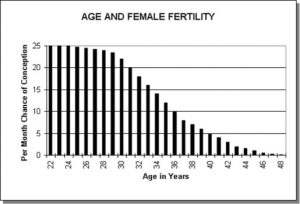 Infertility can be heart-breaking. Even now, the assumption is that if you’ve gone to the effort of getting married, children are the next step. But it’s not always possible.
Infertility can be heart-breaking. Even now, the assumption is that if you’ve gone to the effort of getting married, children are the next step. But it’s not always possible.
As the average age of conception increases from the 20s, to the 30s and 40s, with smoking, or the increase in obesity, the percentage of people trying to use fertility treatments has increased by over 10% in the last few years.
Lifestyle changes, improving diet, exercise, reducing toxins and stress, and natural supplements may help.
 I was lucky with fertility, but had a few hiccups. After my first son I had a negative pap smear, resulting in a biopsy, which caused a blocked cervix. After a D&C, they found fibroids. Then I had ovarian cysts. I became pregnant soon after, but then had a threatened miscarriage. Then my waters broke at 29 weeks, and a week later, along came my second son, at 1.515kg. He was in intensive care for 5 weeks, until he stabilised and put on enough weight to come home. Even now that he’s taller than me, and one of the messiest people I’ve ever seen, he’s never boring, always entertaining, and a constant miracle.
I was lucky with fertility, but had a few hiccups. After my first son I had a negative pap smear, resulting in a biopsy, which caused a blocked cervix. After a D&C, they found fibroids. Then I had ovarian cysts. I became pregnant soon after, but then had a threatened miscarriage. Then my waters broke at 29 weeks, and a week later, along came my second son, at 1.515kg. He was in intensive care for 5 weeks, until he stabilised and put on enough weight to come home. Even now that he’s taller than me, and one of the messiest people I’ve ever seen, he’s never boring, always entertaining, and a constant miracle.
Fertility Specialists
Specialists in fertility resources include:
- IVF Australia
- Next Generation Fertility (AUS)
- The National Fertility Directory (US)
- NHS Direct (UK)
Fertility Treatments
These fertility treatments are currently available. More are still in experimental stage.
- IVF – In-vitro fertilisationStimulate the ovaries to produce more eggs. Extract the eggs and fertilised with sperm “in-vitro” (in a glass test tube), then placed back inside the woman’s body.
- IUI – Intra-uterine inseminationInserting sperm into the womb at ovulation, to increase chance of conception.
- ICSI – Intra cytoplasmic sperm injectionInject a single sperm into a single egg, typically to treat male infertility.
- PGD – Pre-implantation genetic diagnosisDNA screening of IVF-created embryos to determine genetically defective embryos.
- Therapeutic DrugsA variety of drugs address problems in making and releasing and implantation in the womb.
- SurgeryLaparoscopies and keyhole surgery can treat endometriosis, polycystic ovaries